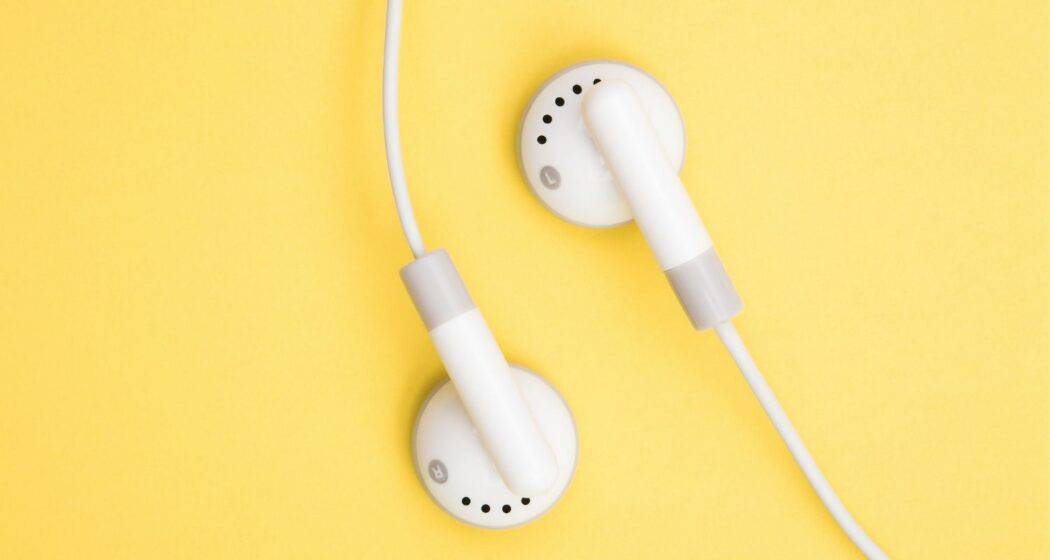In the last decade or so, in-ear “wearables” have become a popular way to interact with our smartphones. Usually called “earbuds,” these devices rest at the entrance of your ear canal and connect wirelessly via Bluetooth to your smartphone. They contain not only speakers but also microphones, so you can use them not only for listening to music or podcasts, but to take phone calls and video conferences, and talk to your automated voice assistant. Many models will also help track biometric data.
It seems that we’re never quite sure how “afraid” of earbuds we should be. For decades, similar technology has been in use, starting with the Sony Walkman™ in the last years of the 1970s. You couldn’t talk to your Walkman, but you could listen to the radio or play cassette tapes at potentially damaging volumes.
PLDs Can Be LOUD!
Today’s personal listening devices (PLDs), including smartphones, have the potential to be even louder than the original Walkman. The tiny amplifiers that drive a set of earbuds or headphones have become so efficient that they can easily double the volume that an original Walkman can put out.
Understandably, many audiologists are concerned about the long-term effects that these super-PLDs may have on our hearing ability. Sometimes we hear people talk about how simply using earbuds is a risk for noise-induced hearing loss (NIHL).
In fact, there should not be a major concern about earbuds or PLDs, though we should always be concerned about sound that is too loud. While it’s true that listening at full volume can damage our hearing, most of us have the sense not to inflict that pain on ourselves. Loud noise is loud noise, whether it comes from far away or from a tiny speaker right next to our eardrum. As long as we’re careful about how we use our earbuds, there should be no cause for concern.
Here are a few things to keep in mind to help you avoid hearing damage from earbuds:
- Start With Low Volume – Whenever you put your earbuds in, start with the volume all the way down, then turn it up just enough so that you can comfortably hear the audio.
- Take Breaks – Every hour, take a 5–10 minute break from listening. This will give your ears a chance to reset. Over time, we can become adjusted to a volume level and feel the need to turn it up. By taking a break, you give yourself a chance to reset your perception to appreciate a reasonable listening level.
- Don’t Listen With Background Noise – If your environment is already somewhat noisy, you’ll be tempted to turn up your PLD to defeat that loud background noise. This could mean that you’ll have to listen at unsafe levels. If the background is noisy, it’s best to avoid using your earbuds, or use a noise-canceling model.
- Consider Noise-Canceling – Both headphones and earbuds are available in an active noise-canceling variety. They work by using built-in microphones to pick up ambient sound, and play it back at the opposite polarity of the acoustic sound. It’s a bit complicated, but basically it creates a new sound that is identical but opposite to the actual environmental sound. When added together, the sounds cancel out and you don’t hear them.
In practice, noise-canceling headphones and earbuds work best when background sound is consistent. They’re an excellent accessory for traveling, where they can cancel the sound of jet engines, trains, and highway noise. By reducing the sound of background noise, you can listen to media or phone calls at a lower volume, thus protecting your hearing. - Consider Over-Ear Headphones – Closed-back, over-ear headphones offer some minimal protection from ambient sound. If you do a lot of music listening, these not only help to naturally reduce background sound by simply blocking it out, but they tend to sound better than earbuds.
- Double Up – If you’re watching movies on a long flight or a bus ride, put in some earplugs and wear your headphones over them. You’ll be able to turn the wanted sound from your headphones up louder without damaging your hearing. Custom-molded earplugs are great for this, as they are very comfortable for long wear and they attenuate (reduce) all frequencies evenly, providing a very natural sound.

